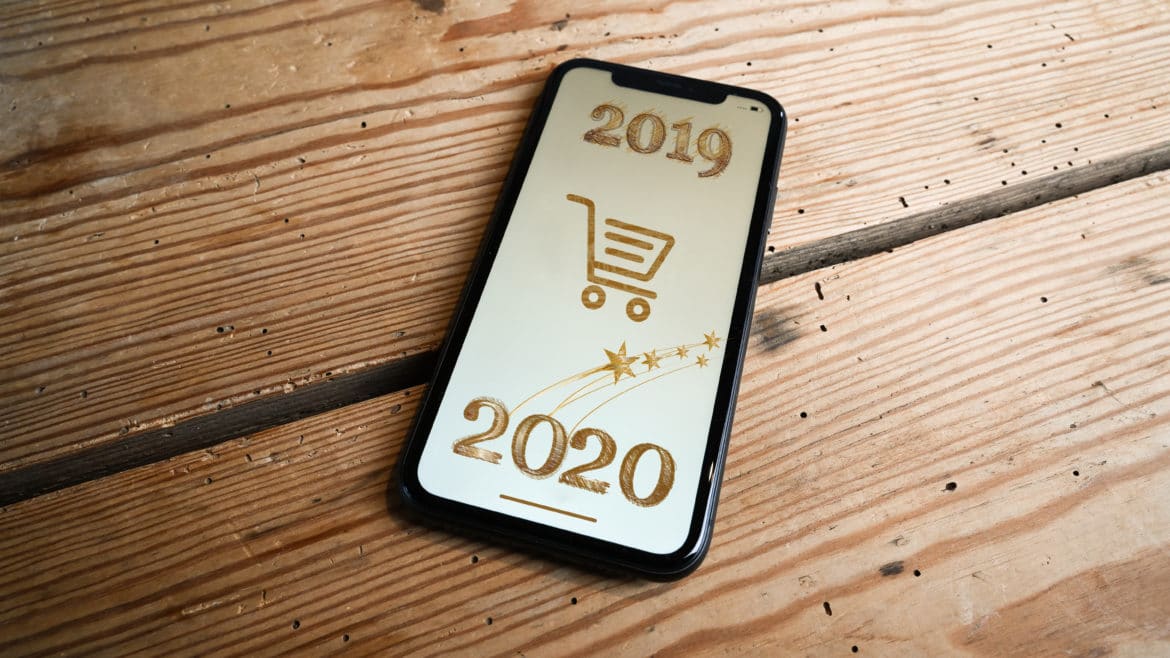The idea of placing a food order ahead of pickup is nothing new. What is new to the restaurant landscape, and especially the fast food and quick service restaurant (QSR) space, is mobile order ahead.
Mobile order ahead technology positions itself as an alluring must-have QSR innovation in 2020. QSRs generated $273 billion in revenue in the United States in 2019, and restaurant owners are keen to increase their piece of the profit pie through mobile ordering.
The facts are hard to ignore, whether you’re a new QSR operator or a seasoned professional. Here are seven compelling reasons to jump on the mobile order ahead bandwagon in 2020.
1. 60% of Digital Orders are Through a Mobile App
It’s estimated that global e-retail sales will reach $4.8 trillion by 2021, so it’s no surprise that consumers choose to do their shopping online when the option is available. It’s convenient and relatively stress free, which is a win for both the consumer and the business.
Traditional sit-down restaurants have been a little slower to adopt online ordering, but you’d have trouble finding a modern fast food or QSR chain without a sophisticated website these days. That said, too many websites feature only the menu and a contact number to call to place an order. It’s only recently that customers were given the option to order online without talking to someone on-site.
Mobile consumers demand mobile solutions, and after a slow start, QSRs are now adapting. According to the market research company The NDP group, 60% of digital orders are through a mobile app today.
2. Mobile Orders Will Be Responsible for 11% of all QSR sales by 2021
Doubling down on the fact that digital orders are predominantly through mobiles apps, The NDP group goes on to predict that mobile ordering and order-ahead apps will carve out a substantial portion of all QSR sales soon. Mobile orders will be responsible for 11% of all QSR sales by 2021.
Early adopters like Starbucks are already reaping the rewards of mobile order ahead and mobile payment. The company made mobile order and pay available to all customers nationwide in 2015, and by Q1 of 2017 mobile was responsible for 7% of all U.S. company-operated transactions.
3. Order Ahead Already Increases Average Order Size by 20%
The big boys on the QSR block are usually the ones to pioneer or test big industry innovations. Taco Bell was one of the first large chain QSRs to roll out an order-ahead app for its customers, and the benefits were almost immediately realized.
The company launched its mobile order-ahead app in late 2014. By mid-2015, Taco Bell was reporting that average order size through their mobile app was 20% greater than their in-store average order size. This figure jumped to 30% by the end of Q4 2016.
4. 65% of QSR Managers Say App Orders Improve the Customer Experience
Customer loyalty programs continue to evolve as QSR technology tries to match consumer demands, and marketers keep trying to personalize the customer experience in ways that convert. Mobile apps make it easier for customers to engage with a brand. But, surprisingly, there are still QSR managers who need convincing. That’s what 2020 and mobile-ahead success is going to do.
Research conducted by the payment news and research group PYMNTS points out that 65% of QSR managers say app orders improve the customer experience. This sounds like good news. What it really means is that 35% of management is still slow to catch on because customers like ordering through mobile.
5. 92% of Customers Like Ordering Through Mobile
Consumers are mobile by nature these days. In fact, mobile is taking over so completely that CNBC reports that 3 in 10 adults don’t carry cash anymore.
The same PYMNTS research cited above noted that 92% of customers have a positive view of using an app to place a QSR order. Consumers are confident that mobile ordering and payment is the preferred way to interact with QSR brands. This is good news for restaurants with the order-ahead option on the service menu in 2020.
6. Customers Prefer Branded Apps and Websites to Third-Party Options
Brand loyalty is strong even in today’s have-it-now economy. That means consumers are more likely to invest their time and money through branded and recognizable outlets. This holds true for QSR establishments in 2020.
A recent Restaurant Success Report from restaurant solution provider confirmed that patrons would rather go through a restaurant’s website when ordering online than through a third-party site like Grubhub.
Why is this significant? Because QSRs that have branded, reliable mobile order-ahead solutions are going to capture consumer interest in 2020. Mobile order-ahead providers like PoppinPay make it easy to keep your brand flavor and create a solution that works for you and your customers.
7. 59% of Restaurant Owners Face Disruption from Order-Ahead Competitors
Streamlining the customer experience and providing a mobile order-ahead option for consumer convenience is all well and good. But more restaurant managers will be adopting mobile order-ahead solutions for another reason—to stay ahead of the competition.
Mobile ordering is catching on so much that it’s affecting restaurants that don’t offer it. PYMNTS reports that 59% of restaurant operators are facing the heat and feeling disruption from competitors who have already adopted mobile order-ahead technology.
Fortunately, there’s plenty of room for growth in 2020 because PYMNTS also points out in their Restaurant Readiness Index that only 30% of smaller QSR establishments have mobile apps for ordering.
It’s Not Too Late to Adopt Mobile Order Ahead
2020 is going to be a year of mobile dominance, and QSRs big and small will either adopt order-ahead solutions or get left behind. That said, it’s not too late to get in on the order-ahead action. PoppinPay experts are ready to help you get started with mobile order ahead.

